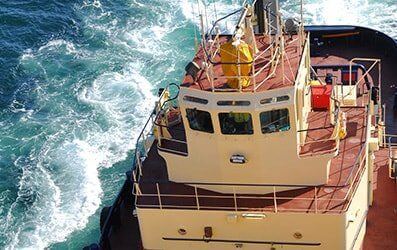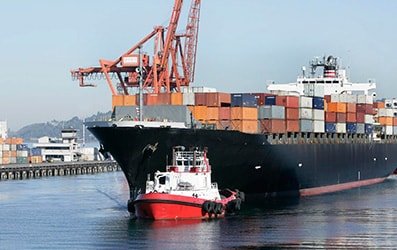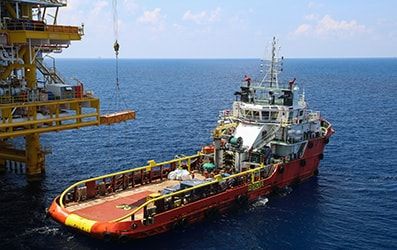Maritime workers face several health and safety risks every day they spend on the job. Along with the risk of suffering physical injuries, this includes the risk of developing serious illnesses such as AML leukemia.
What Is AML Leukemia?
Acute myeloid leukemia, or AML leukemia, is a type of blood cancer that can result from exposure to a variety of toxic fumes and substances. As the American Cancer Society explains:
“Leukemias are cancers that start in cells that would normally develop into different types of blood cells. . . . Acute myeloid leukemia (AML) starts in the bone marrow (the soft inner part of certain bones, where new blood cells are made), but most often it quickly moves into the blood . . . .”
As a type of blood cancer, AML leukemia can affect many different parts of the body. According to the American Cancer Society, AML leukemia most commonly affects the “lymph nodes, liver, spleen, central nervous system (brain and spinal cord), and testicles.”
AML leukemia is treatable in some cases, with prompt detection and treatment significantly improving the chances of eliminating all of the cancerous cells from the body. But, even in these cases, remission (or recurrence) remains a concern. Tragically, AML leukemia can also be fatal, and the American Society of Clinical Oncology (ASCO) reports that the five-year survival rate for patients age 20 and older is just 27 percent.
Chemicals and Other Hazards That Can Cause AML Leukemia
There are several risk factors for AML leukemia. According to the American Cancer Society, these include being male, getting older, smoking, having certain blood disorders and having certain genetic conditions, among others. But, as a maritime worker, you do not have to have any of these risk factors to get AML leukemia on the job. As the American Cancer Society also notes, the risk of developing AML leukemia increases if you are exposed to certain chemicals.
This includes exposure to benzene. “Benzene is a solvent used in the rubber industry, oil refineries, chemical plants, . . . and gasoline-related industries.” As a result, maritime workers are regularly exposed to benzene on the job. Gasoline, jet fuel, diesel fuel and other fuels stored on barges can all leave behind benzene vapors and fumes, and exposure to these vapors and fumes unfortunately leads to many job-related AML leukemia diagnoses.
Exposure to various other chemicals stored on barges can cause AML leukemia as well. For example, toluene, xylene and various light hydrocarbons have all been linked to AML leukemia.
Warning Signs for AML Leukemia
If you are a maritime worker, when should you be concerned about AML leukemia? While AML leukemia generally results from long-term exposure to hazardous chemicals such as benzene, toluene, xylene and hydrocarbons, maritime workers who are exposed to these chemicals in high concentrations can develop AML leukemia relatively quickly. As a result, you should be familiar with the early warning signs of this potentially fatal type of cancer.
As outlined by the ASCO, early warning signs and symptoms of AML leukemia include:
- Abdominal, back and chest pain
- Bleeding that does not easily stop
- Blurred vision
- Bruising easily
- Dizziness
- Fatigue
- Fever
- Frequent infections
- Headaches
- Lumps beneath the skin
- Pale skin
- Red spots on the skin
- Swelling
- Weakness
- Weight loss
These can all be symptoms of other health conditions as well, and, as a result, AML leukemia is frequently misdiagnosed—particularly among younger patients. If you are a maritime worker and you are experiencing these symptoms, you should seek treatment promptly, and you should be sure to tell your doctor that you may have been exposed to benzene, toluene, xylene or hydrocarbons on the job.
How Doctors Diagnose AML Leukemia
If it appears that you may have AML leukemia based on an initial physical exam, your doctor may perform various tests in order to confirm your diagnosis. For example, tests doctors frequently use to diagnose AML leukemia include:
- Blood tests
- Bone marrow aspirations and biopsies
- Cytogenetic testing
- Flow cytometry testing
- Immunohistochemistry testing
- Karyotyping
- Molecular testing
- MRI, CT and PET-CT scans
- Spinal tap (lumbar puncture)
What To Do if You Have Concerns
If you have concerns about AML leukemia based on your exposure to hazardous chemicals, fumes or vapors as a maritime worker, there are some important steps you should take to protect your health and your legal rights. As noted above, while AML leukemia can be fatal, the chances of survival are best with prompt detection and treatment. With this in mind, maritime workers who are experiencing the symptoms of AML leukemia listed above should:
1. Take Notes
To get ready for your initial doctor’s appointment, you should write down a list of your symptoms. If you are aware that you have been exposed to any specific chemicals at work, you should make a list of these as well.
2. See a Doctor
Given the importance of prompt diagnosis and treatment, you should see a doctor as soon as possible. As a maritime worker, you have the right to choose your own doctor under the Jones Act.
3. Wait For Your Doctor’s Diagnosis
If you are currently experiencing exposure to chemicals that can cause AML leukemia at work, you should wait for your doctor’s diagnosis. Be patient, and do your best to avoid doing anything that could further jeopardize your health.
4. Talk to a Jones Act Lawyer
Maritime workers who get AML leukemia on the job have clear legal rights. To make sure you are able to recover the financial compensation you deserve, you should speak with a Jones Act lawyer promptly.
We Represent Maritime Workers in Jones Act Claims Nationwide
Our lawyers represent maritime workers in Jones Act claims nationwide. If you would like to speak with a lawyer about filing a claim for AML leukemia, you can call 800-468-4878 or contact us online to arrange a free and confidential consultation.
Share This







